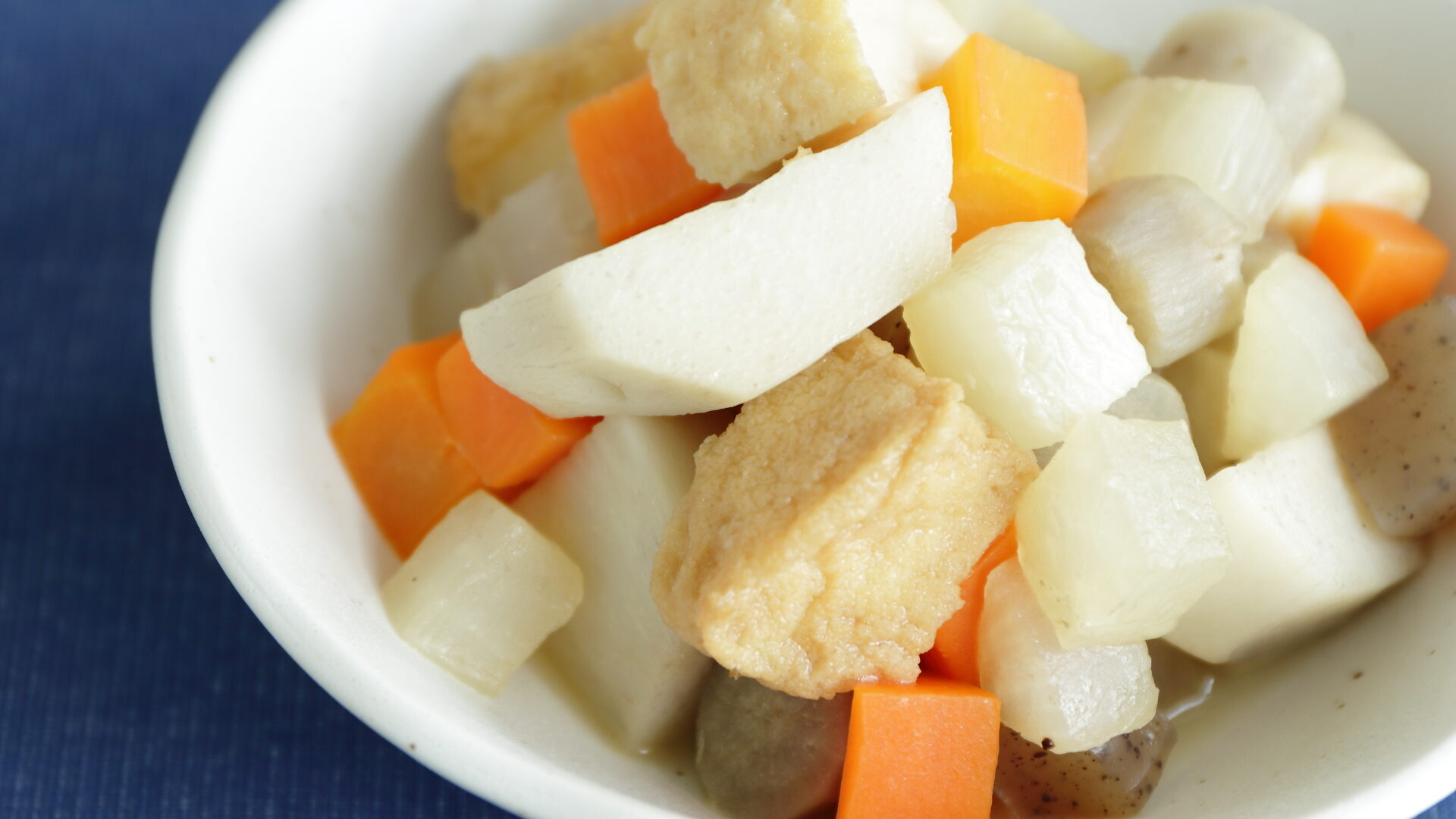
Hey everyone, let’s talk about a real home-style dish from Kochi – Guruni! It’s a simple but satisfying stew, packed with hearty root vegetables that are easy to find in the area. The name itself, “Guruni,” gives you a hint about its friendly, communal nature. It’s the kind of dish that brings people together, warming you up from the inside out, especially on those chilly days.
Dish Name: Guruni
- Region / Location: Kochi Prefecture (throughout the prefecture).
- Primary Area of Tradition: Throughout Kochi Prefecture.
- Main Ingredients: Daikon radish, carrots, taro, fried tofu (atsuage), konnyaku, and other vegetables.
How It’s Eaten / Served
Guruni is made by cutting root vegetables like daikon radish, carrots, and taro into cubes. These are then simmered in a large pot of dashi (Japanese broth) made with dried small fish, and seasoned with soy sauce. It’s known for its light and simple flavor, a taste of old-fashioned home cooking. This stew is often made in large quantities because it tastes even better when reheated, as the ingredients soak up all the flavors. In some areas, people enjoy it seasoned with miso instead of soy sauce.
Cultural Background and Preservation
The name “Guruni” comes from the Tosa dialect word “guru,” meaning “group” or “everyone,” which reflects how various ingredients are cooked together in this dish. Back in the day, when getting food wasn’t as easy as it is now, people would make large pots of Guruni with whatever vegetables they had on hand, reheating it many times to make it last. Traditionally, Guruni was made with six ingredients, said to represent the six characters of the Buddhist phrase “Namu Amida Butsu”. While the tradition of using root vegetables remains, there aren’t strict rules about what goes into Guruni, so families often have their own variations. For example, in the Noichi area of Konan City, it’s called “Oguru,” and in Tosa City, when nine ingredients are used, it’s called “Itoko-ni,” which means “cousin stew.” This name comes from the idea that ingredients of the same type, like daikon radish, carrots, and burdock root, are “cousins” to each other.
While Guruni is a classic winter dish, it’s now cooked year-round in many homes because the ingredients are readily available. The tradition is kept alive in school lunches throughout Kochi Prefecture, and you can also find it on the menu at local restaurants.
Additional information:
- Daikon (大根): A large white radish with a mild flavor.
- Atsuage (厚揚げ): Thick slices of tofu that have been deep-fried.
- Konnyaku (こんにゃく): A jelly-like food made from the konjac plant.
- Dashi (だし): A Japanese broth made from ingredients like dried fish and kelp.
The information about regional cuisine featured on this website (Piggy's Grandma of Japan) is summarized and adapted from the Ministry of Agriculture, Forestry and Fisheries of Japan (MAFF) website, "Our Regional Cuisines"Additional commentary is provided based on the unique experiences and perspectives of the site's editors.
The copyright for the original content regarding regional cuisine belongs to the Ministry of Agriculture, Forestry and Fisheries of Japan.
The summaries and adaptations published on this site are intended for informational purposes only. Piggy's Grandma of Japan does not guarantee the accuracy or completeness of this information. For the most accurate and complete details, please refer to the original pages on the MAFF website.

